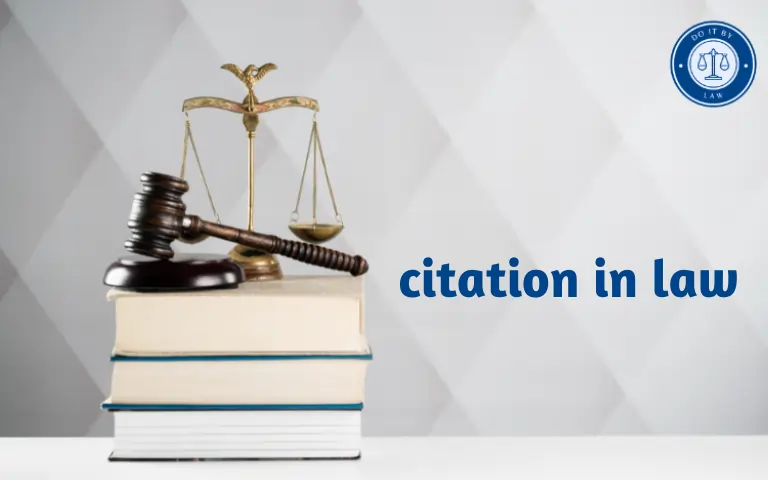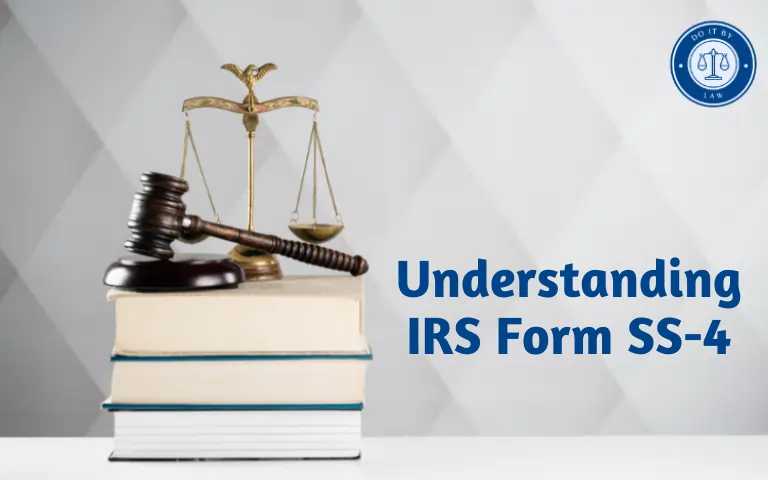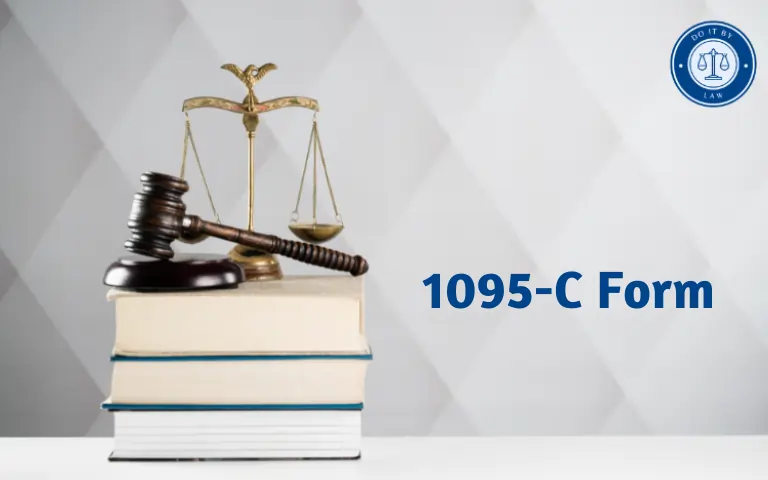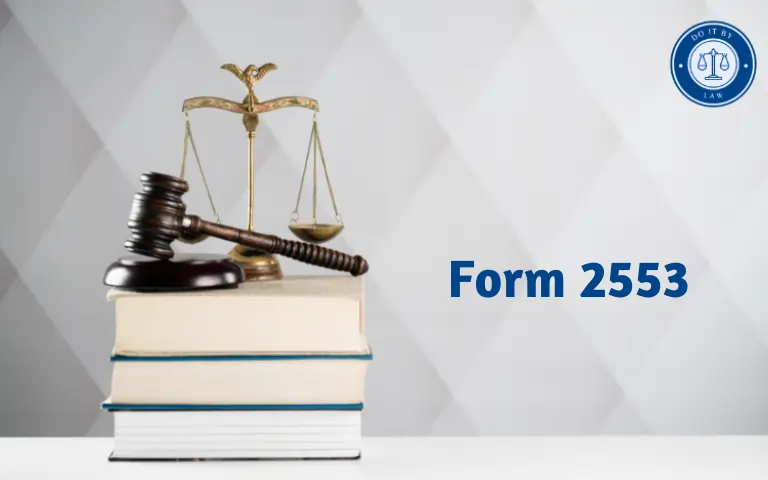Citation in Law: What It Means & How to Use It Right
Dynamic Law Citation Generator
Confused about citation in law and how to use it in your legal documents? Many legal professionals and students struggle to understand what is a citation in law, the different types like neutral citation or parallel citation, and the correct way to reference cases or statutes. Accurate citations are crucial for credibility, compliance, and winning cases.
This guide will demystify citation in law, explain its importance, and provide actionable steps to help you master legal referencing.
What is a Citation in Law?
A citation in law is a formal reference to a legal source—such as a court case, statute, regulation, or legal commentary—that supports a legal argument or helps readers locate that source. Simply put, it’s how lawyers and courts identify and verify legal authorities in written documents. Accurate citations ensure credibility, maintain legal precision, and make legal content traceable.
The Purpose of Legal Citation
The primary purpose of a legal citation is to:
- Support arguments with authoritative sources
- Help readers and courts find the referenced material
- Maintain uniformity in legal documents and research
- Build professional trust and clarity in legal communication
Types of Legal Citations

1. Case Law Citations
Case law refers to judicial opinions issued by courts. A case citation in law usually includes the names of the parties involved, the year, court abbreviation, and a reference to the law report.
Example: Smith v. Jones [2020] AC 123
2. Statute Citations
These refer to legislative acts or statutes passed by lawmakers. A statute citation typically includes the name of the act, year, and section.
Example: Data Protection Act 2018, s.12
3. Regulation References
These citations refer to rules issued by administrative agencies. They often include regulation titles, numbers, and issuing authority.
Example: GDPR, Article 6
Citation in Law Enforcement
In a non-legal writing context, this term often refers to a legal notice issued by police (like a ticket or summons). It means the individual is being charged with a minor offense and must appear in court.
Neutral Citation in Law
A neutral citation is a court-issued identifier for a case that is independent of any law report. It’s widely used in digital legal databases and ensures uniform referencing across jurisdictions.
Example: [2019] EWCA Civ 112
Parallel Citation in Law
This occurs when the same legal case is published in multiple law reports, and each version can be cited. It ensures completeness in references by including all available report formats.
Example: 123 U.S. 456, 98 S. Ct. 789
How to Read and Write Citations in Law
Legal citations may look intimidating at first glance, but once you know what each part means, it becomes second nature. Whether you’re reviewing court cases, preparing contracts, or writing legal opinions, knowing how to read a citation in law helps you locate authoritative sources quickly and accurately.
Key Components of a Legal Citation
A standard case citation includes the following elements:
| Component | Description | Example |
|---|---|---|
| Parties | Names of the parties involved in the case | Smith v. Jones |
| Year | Year of the decision | [2020] |
| Court | The court that issued the decision | UKSC (UK Supreme Court) |
| Report | Law report citation or volume/page | AC 123 (Appeal Cases) |
Example Citation:
Smith v. Jones [2020] AC 123
This means the case between Smith and Jones was decided in 2020 and can be found in volume 123 of the Appeal Cases law reports.
Common Symbols and Abbreviations
| Symbol | Meaning |
|---|---|
| AC | Appeal Cases (UK law reports) |
| ID | Idem – refers to the same source cited immediately before |
| Supra | Refers back to a citation mentioned earlier in the text |
| Infra | Points the reader to a citation that appears later in the document |
These symbols help keep legal writing concise while still pointing readers to the right source.
How to Read a Citation in Law – Step-by-Step
Let’s break down this example:
Smith v. Jones [2020] AC 123
- Identify the case parties – “Smith” is the claimant, “Jones” is the defendant.
- Year of decision – It was decided in 2020.
- Legal reporter or series – “AC” tells us it’s from the Appeal Cases law report.
- Page number or citation number – “123” is the starting page where the case is found.
This means: In 2020, the case between Smith and Jones was decided by a court whose decision was published in the Appeal Cases, starting at page 123.
Simple Template to Write a Case Citation
[Party A] v. [Party B] [Year] [Report Abbreviation] [Page Number]
Example: Taylor v. Davis [2018] EWCA Civ 1234
Pro Tip: To avoid errors, always follow your jurisdiction’s preferred citation style (e.g., Bluebook, OSCOLA, AGLC). Using a legal citation generator or template can save time and boost accuracy.
💡 Bonus Tips for Writing Citations:
- Always use the correct citation style for your jurisdiction (e.g., APA, Bluebook, OSCOLA).
- Double-check abbreviations using a law report citation guide.
- For in-text citations, mention the case name and year only if brevity is needed.
Need a quick reference? 👉 Download our Legal Citation Cheat Sheet
Legal Citation in Practice
Understanding the theory of citation in law is essential—but applying it correctly in real legal documents is where it really counts. Whether drafting court pleadings, legal memos, or business contracts, the way you cite legal sources can impact your document’s credibility, professionalism, and admissibility.
| Context | Correct Citation | Incorrect Citation |
|---|---|---|
| Case Law | Miller v. Prime Minister [2019] UKSC 41 | Miller case in 2019 UK court |
| Statute | Consumer Rights Act 2015, s.11 | UK consumer act section 11 |
| Regulation | GDPR, Article 5(1)(c) | GDPR rules about data |
| Legal Memo | “See Pepper v. Hart [1993] AC 593 for statutory interpretation.” | “Pepper case says courts can use Hansard sometimes.” |
| Contract Clause | “Complies with Employment Rights Act 1996, s.94.” | “Employee has right to not be unfairly dismissed.” |
⚖️ 1. Using Citations in Court Pleadings
Court pleadings—like complaints, motions, and responses—must reference case law, statutes, or regulations to justify a legal argument.
Correct Example:
“As held in Donoghue v. Stevenson [1932] AC 562, a duty of care exists even without a contractual relationship.”
Incorrect Example:
“In Donoghue v Stevenson case 1932, the duty was mentioned.”
❌ Missing proper format, year bracketed incorrectly, and citation details incomplete.
✅ Tip: Always include neutral citation (if available), correct abbreviation of the law report, and proper punctuation.
📝 2. Using Citations in Legal Memo
Legal memos rely heavily on clear and accurate citations to demonstrate legal precedent and provide research support for internal or client use.
Correct Example:
“Under R v. Brown [1993] 2 All ER 75, consent was not a valid defense in cases of serious bodily harm.”
Incorrect Example:
“R v. Brown case says consent isn’t allowed in injuries.”
❌ Too informal, lacks citation format and law report reference.
✅ Tip: Use consistent formatting, typically OSCOLA or Bluebook, depending on jurisdiction.
📄 3. Using Citations in Business Law Contracts
Though less common, citations can appear in business contracts to define legal terms, refer to statutes, or back up enforceability clauses.
Correct Example:
“This agreement shall be governed in accordance with the Companies Act 2006 (UK).”
Incorrect Example:
“Subject to the UK company law.”
❌ Vague and non-specific. Lacks citation to a specific act or section.
✅ Tip: Use citations to anchor legal meaning or resolve interpretation ambiguities in contracts.
Using a citation in legal writing is not just about form—it’s about clarity, authority, and professionalism. By mastering citation styles and avoiding sloppy references, you build credibility and reduce risks of misinterpretation.
👉 Want a checklist to keep your legal citations airtight? Download Our Legal Citation Checklist
👉 Learn how to write citation in law like a pro – Explore Citation Templates
Common Legal Citation Systems in Law
Different jurisdictions use different rules for formatting and presenting legal citations. Choosing the correct system is essential for legal accuracy, credibility, and consistency. Below are some of the most widely used legal citation systems in law across various regions and institutions.

1. The Bluebook (U.S. Legal Citation)
Used in: United States
Common in: Law schools, courts, legal journals
- Known for its comprehensive and detailed rules
- Includes formats for case law, statutes, administrative codes, and secondary sources
- Preferred by federal courts and many state courts
Example:
Smith v. Jones, 123 U.S. 456 (2020)
2. OSCOLA (Oxford University Standard for the Citation of Legal Authorities)
Used in: United Kingdom (especially academia)
- Focuses on footnotes rather than in-text citation
- Emphasizes simplicity and minimal punctuation
- Popular among UK law students and researchers
Example:
Donoghue v Stevenson [1932] AC 562 (HL)
3. AGLC (Australian Guide to Legal Citation)
Used in: Australia
- Created by Melbourne University Law Review
- Covers Australian and international sources
- Highly structured, with a focus on clarity and detail
Example:
Cole v South Tweed Heads Rugby League Football Club Ltd (2004) 217 CLR 469
4. McGill Guide (Canadian Guide to Uniform Legal Citation
Used in: Canada
- Bilingual format: English and French
- Used in Canadian courts and law reviews
- Includes cases, statutes, government documents, international materials
Example:
R v Smith, [1992] 2 SCR 915
5. ALWD Citation Manual (Association of Legal Writing Directors)
Used in: United States (alternative to The Bluebook)
- More streamlined and easier to follow
- Often used in legal writing courses
- Suitable for court filings and professional documents
6. Chicago Manual of Style (Legal Adaptations)
Used in: Interdisciplinary legal work and some law review articles
- Useful for combining legal and non-legal sources
- Allows flexibility for legal commentary and policy papers
Choosing the Right System
The right citation system depends on:
- Your country’s legal tradition
- The institution or court’s preferences
- The nature of your writing (academic, professional, or judicial)
Confused about which system to use? Download our side-by-side legal citation comparison chart to ensure compliance.
Common Citation Practices and Terms in Legal Writing
Legal citations follow certain conventions and include some common terminology:
| Term/Practice | Meaning | Example | Use Case |
|---|---|---|---|
| Case Citation | A reference to a legal case by name, volume, reporter, and page number | Brown v. Board of Education, 347 U.S. 483 (1954) | Referencing judicial decisions |
| Statute Citation | Reference to a law passed by the legislature | Title VII of the Civil Rights Act, 42 U.S.C. § 2000e | Citing enacted laws |
| Neutral Citation | Citation format independent of any reporter | R v Smith, 2001 SCC 10 | Used in electronic court decisions |
| Parallel Citation | Includes more than one source where a case is published | 123 U.S. 456, 98 S.Ct. 789 | Used when a case appears in multiple reporters |
| Id. | Refers to the immediately preceding source | Id. at 489 | Shortens repeated citations |
| Supra | Refers to a previously cited source | Smith, supra note 5, at 22 | Used after full citation has already appeared |
| Infra | Refers to a source that will be cited later | See discussion infra Part III | For forward referencing |
| In-text citation | Citation embedded directly into the sentence | (Donoghue v Stevenson [1932] AC 562) | Used in legal memos or journal articles |
| Citation Signal | Introduces and explains the relationship of the source to the proposition | See, e.g., But cf., Contra, See also | Adds clarity to citation use |
| AC (Appeal Cases) | Refers to decisions published in Appeal Cases (UK) | Donoghue v Stevenson [1932] AC 562 | Common in UK legal citation |
✍️ Tips for Consistent Practice
- Always follow jurisdictional guidelines (e.g., Bluebook, OSCOLA, AGLC).
- Use neutral citations when referencing online case databases.
- Apply citation signals accurately to reflect the relevance of your sources.
- Ensure uniform punctuation and spacing.
For these reasons, legal professionals must take care to correctly construct citations for all sources used, whether quoting directly or simply referring to relevant authorities. Attention to detail matters.
Tools & Resources to Improve Legal Writing
Whether you’re a law student, a junior associate, or a seasoned legal professional, improving your legal writing is a constant journey. The good news? There are powerful tools and curated resources that make this easier, more efficient, and more professional.
📚 1. Legal Citation Tools
Proper citation is the backbone of effective legal writing. These tools automate formatting and help ensure consistency:
| Tool | Function | Website |
|---|---|---|
| Cite This For Me | Generates citations in various legal formats | Free & paid versions |
| Lexis Nexis | Includes citation tools with legal research | Subscription required |
| RefWorks | Academic citation manager supporting legal formats | Institutional access |
✍️ 2. Grammar & Clarity Enhancers
Polished grammar and clear structure are essential for legal credibility:
| Tool | Purpose | Benefit |
|---|---|---|
| Grammarly | Grammar, tone, and clarity checker | Ensures professional tone in legal writing |
| Hemingway Editor | Simplifies and strengthens language | Ideal for legal memos & client letters |
| WordRake | Legal-specific editing tool | Refines legal documents with precision |
🧠 3. Legal Writing Style Guides
Understanding how to format and express arguments correctly is key:
| Resource | Why It’s Useful |
|---|---|
| The Bluebook (U.S.) | Gold standard for legal citation in the U.S. |
| OSCOLA Guide (UK) | Preferred by British universities and legal journals |
| AGLC Manual (Australia) | Essential for Australian legal writing |
| Plain Language for Lawyers | Teaches clear, client-friendly legal writing |
📈 4. Legal Research Platforms with Writing Support
Accessing and referencing accurate legal content improves authority in your writing:
- Westlaw & Westlaw Edge
- Lexis Advance
- CanLII (Canada)
- AustLII (Australia)
- BAILII (UK)
Many include built-in citation support and writing templates.
🚀 5. Practice & Learning Platforms
Keep refining your skills with real-world exercises and examples:
- Legal Writing Pro (online training programs)
- Harvard Writing Center – Legal Writing (free guides)
- YouTube Channels like LegalEagle or Law Academy
💡 Pro Tip:
Pair a citation tool with a grammar editor to streamline your writing process—accuracy + clarity = winning legal documents.
Common Citation Mistakes and How to Avoid Them
Even seasoned legal writers slip up when it comes to citations. But in the legal world, even a small citation error can weaken an argument, mislead readers, or hurt your credibility in court. Here’s a breakdown of the most common citation mistakes in law—and exactly how to avoid them.

❌ 1. Using the Wrong Citation Format
Mistake: Mixing up styles like Bluebook, OSCOLA, or AGLC depending on the jurisdiction.
Fix: Always check the required format based on location or publication. Use a legal citation guide or tool to double-check formatting.
❌ 2. Incomplete Case References
Mistake: Missing key elements like court name, year, or reporter citation.
Fix: A proper case citation in law should include the parties, volume, reporter, page number, court, and year. Use templates to ensure nothing is left out.
❌ 3. Overusing “Id.” or “Supra” Incorrectly
Mistake: Repeating Id. or Supra when it doesn’t refer to the immediately preceding or clearly referenced source.
Fix: Only use Id. when citing the same source as directly above. For “Supra”, make sure a full citation appears earlier in the text.
❌ 4. Misplacing Punctuation and Spacing
Mistake: Incorrect commas, italics, or spacing throw off the entire citation.
Fix: Double-check your citation’s structure using your jurisdiction’s style guide. For instance, U.S. case names are italicized; U.K. citations are not.
❌ 5. Citing the Wrong Authority
Mistake: Citing an outdated statute or an overruled case.
Fix: Always cross-verify with official databases like Westlaw, LexisNexis, or government portals for the most current law.
🛠️ Pro Tips to Avoid Legal Citation Errors:
- ✅ Use citation tools like WordRake, CiteThisForMe, or Lexis Citation Builder
- ✅ Bookmark your jurisdiction’s official citation style guide
- ✅ Proofread legal documents solely for citations before submission
- ✅ Create a personal citation checklist to follow for every assignment
📌 Avoiding these legal citation pitfalls doesn’t just improve your writing—it protects your legal credibility.
Need help proofreading your citations? download our free citation checklist to catch common errors.
Conclusion: Mastering the Language of Law
In the world of legal writing, citations are more than formalities—they’re the foundation of trust. Whether you’re referencing statutes, cases, or legal commentary, mastering how to cite correctly is what separates credible legal work from careless errors.
Using the proper citation in law ensures:
- 🧩 Clarity – Readers can follow and verify your arguments with ease
- 🏛️ Authority – You anchor your points in respected legal precedent
- ✍️ Professionalism – Proper formatting reflects legal expertise and diligence
Don’t let formatting errors weaken your legal arguments.
📝 Download our FREE Legal Citation Templates to streamline your writing
📅 Schedule a Legal Writing Consultation for personalized guidance





